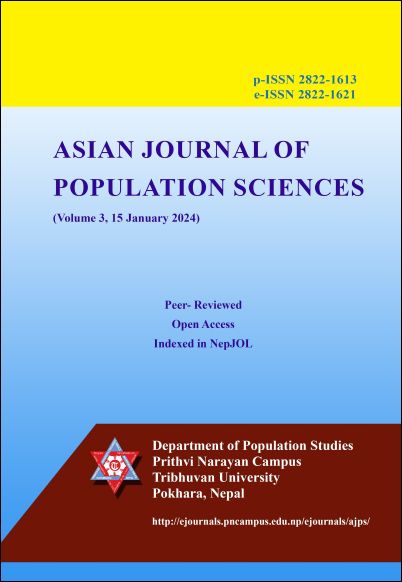Transformations of Parental Socio-economic Characteristics into the Married Couple in Rural Nepal
DOI:
https://doi.org/10.3126/ajps.v3i1.61829Keywords:
couple, husband, husband-side, parent, wife, wife-sideAbstract
This study is about the attributes of different households which together come into the married couples to unite into their wedlock. The purpose of the study was to trace out the carry-over of the wife and husband side parental attributes into the household socio-economic situation of married couples. A total of seventy-five married couples and their either side parents’ (wife side and husband side) socio-economic and demographic information were taken using a semi-structured questionnaire. Data were collected in Thakre Rural Municipality of Dhading district of Nepal from February to April of 2022 from the conveniently selected respondents using face-to-face interviews. The data were analyzed in terms of frequency, mean and other descriptive statistics. The study revealed that there is a growing trend of inter-caste marriage and love marriage in the younger generations compared to their parents, however, inter-religious marriages are still very few in Nepalese rural society. Findings of the study also revealed that the male counterparts were older in age structures on all three sides while the wife side parents were better off in terms of level of wealth and income. The study further unveiled that the husbands have been able to marry with the wives whose parents have higher economic status than their parents. This finding is useful in understanding the current pattern of marriage as well as the socio-economic transfer brought together by the married couple as a carryover from their respective parental houses.
Downloads
Downloads
Published
How to Cite
Issue
Section
License

This work is licensed under a Creative Commons Attribution-ShareAlike 4.0 International License.




